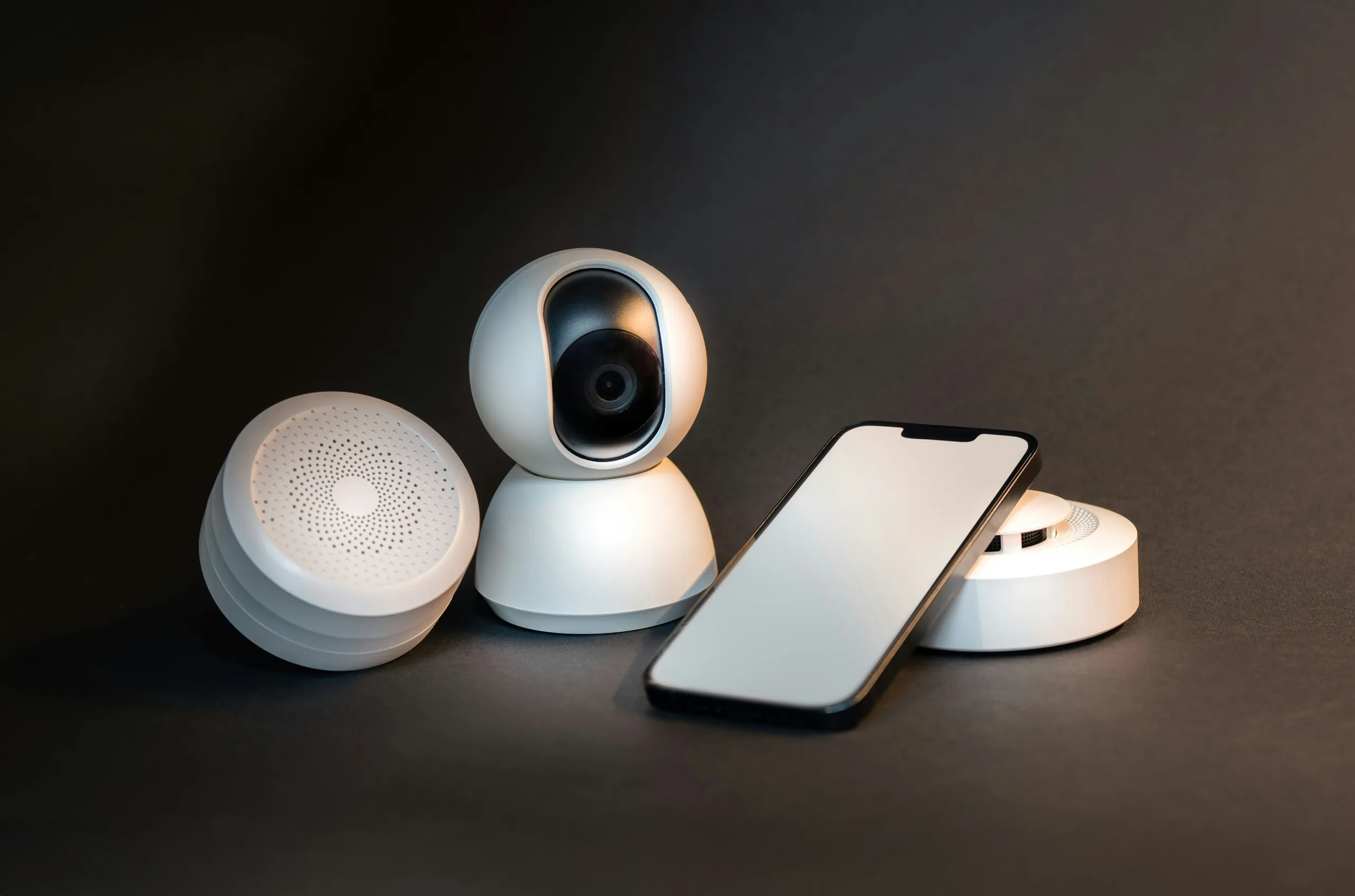Understanding Internet of Things Security: Challenges & Solutions
A hacker doesn’t need to break into your corporate network when they can walk through the front door disguised as your smart coffee maker.
Right now, over 19 billion IoT devices connect to the internet, and 98% of their traffic flows completely unencrypted. That smartwatch on your wrist, the thermostat in your office, and the sensors monitoring hospital patients all represent potential entry points for attackers.
Here’s what makes this critical: IoT devices weren’t built like your laptop. They have weak processors, run obscure operating systems, and often sit forgotten in remote locations for years without IoT device security updates.
After analyzing hundreds of IoT breaches and working with enterprise security teams, we’ve identified the specific vulnerabilities that matter most and the solutions that actually work. This guide breaks down the real challenges in IoT cybersecurity and provides actionable steps to protect your connected infrastructure today.
The Real Cost of Weak IoT Security
Remember the Mirai botnet attack in 2016?
Hackers took control of hundreds of thousands of IoT devices, mostly cameras and routers. They used these devices to launch attacks that knocked major websites offline.
The devices had one thing in common: default passwords that nobody bothered to change.
That attack showed us something important. IoT devices don’t just put themselves at risk. They become weapons that attackers use against other targets.
The Biggest IoT Cubersecurity Challenges
To protect your network effectively, you need to understand how Internet of Things security works and why traditional security approaches fall short.
Let’s examine the most critical vulnerabilities.
-
Weak Passwords and Authentication
Most IoT devices ship with simple default passwords like “admin” or “12345.” Manufacturers print these passwords right on the device or in the manual. Anyone can find them.
The problem gets worse because users rarely change these passwords.
Why? Sometimes the device doesn’t make it easy. Other times, people don’t realize they need to.
Many IoT devices don’t support multi-factor authentication either. This gives attackers an easy way in. They scan the internet for devices, try common passwords, and gain unauthorized access in seconds.
-
Inadequate Update Mechanisms
Your phone reminds you to install updates regularly. Most IoT devices don’t work that way.
Many devices can’t receive updates over the internet. Some manufacturers stop providing cyber security patches after a year or two. Others never release updates at all.
When researchers discover a vulnerability, it stays vulnerable forever. Even when updates exist, installing them across thousands of devices becomes a nightmare.
A factory might have sensors in difficult-to-reach places. A city might have smart meters spread across hundreds of miles.
-
Limited Visibility and Asset Management
Many organizations don’t know how many IoT devices are connected to their networks. Employees bring in smart speakers. Contractors install wireless sensors. These “shadow IoT” devices appear without IT department approval.
According to Forescout’s 2024 research analyzing nearly 19 million devices, IoT vulnerabilities expanded by 136% since 2023, making connected devices increasingly attractive targets for attackers.
-
Unprotected Network Communications
Many IoT devices send data without encryption. Your smart meter might broadcast your electricity usage in plain text. A medical device might transmit patient data that can be intercepted by anyone.
The protocols these smart devices use often have security flaws. Their APIs lack proper authentication. And many organizations put IoT devices on the same network as their critical systems, which makes one compromised smart device a gateway to everything else.
-
Physical Tampering Risks
IoT devices often sit in public or remote locations.
Someone can physically access a smart parking meter. They can open a weather sensor on a roof. They can tamper with a security camera.
Once they have physical access, they can extract data, install malicious firmware, or reverse-engineer the device to find vulnerabilities they can exploit in other identical devices.
Comprehensive IoT Security Solutions
Step 1: Start with the Device Itself
Force users to create strong, unique passwords during initial setup. Don’t allow devices to operate with default credentials.
Choose devices with hardware-based security features. Look for secure boot capabilities that prevent unauthorized firmware from running. Pick devices that encrypt data before storing it.
Before you buy any IoT device, ask the vendor about their security practices.
- How often do they release updates?
- How long will they support the device?
- Do they have a process for reporting vulnerabilities?
Step 2: Isolate Your IoT Devices
Never put IoT devices on the same network as your critical systems.
Create distinctly separate networks for different types of devices. Your security cameras go on one network. Your HVAC sensors go on another.
| Device Type | Network Segment | Access Requirements | Security Controls |
| Security Cameras | VLAN 10 (Surveillance) | Video storage server only | Firewall rules blocking internet access; monitored 24/7 |
| HVAC Sensors | VLAN 20 (Building Systems) | Building management system only | Read-only access; scheduled communication windows |
| Medical Devices | VLAN 30 (Healthcare IoT) | Patient monitoring systems; encrypted channels | HIPAA-compliant logging; strict access controls |
| Manufacturing Sensors | VLAN 40 (Industrial IoT) | SCADA systems; production databases | Air-gapped from corporate network; real-time monitoring |
| Guest IoT Devices | VLAN 50 (Isolated Guest) | Internet only; no internal resources | Zero trust policy; automatic 24-hour expiration |
Use VLANs to segment traffic. Configure firewalls that understand IoT protocols. These specialized firewalls can spot suspicious behavior that traditional firewalls miss.
A Zero Trust approach works well for IoT. Don’t trust any device by default.
Verify every connection request. Limit each device to only the resources it absolutely needs.
Step 3: Control Access Tightly
Use certificates instead of passwords when possible. Certificates prove a device’s identity without transmitting credentials that attackers can steal.
Implement role-based access controls. A temperature sensor needs to send readings to your monitoring system. It doesn’t need to access your customer database.
Apply the principle of least privilege everywhere. Give each device only the minimum permissions it needs to do its job.
Step 4: Monitor Everything
Modern security tools use artificial intelligence to learn normal device behavior. When a sensor that usually sends data every five minutes suddenly connects to an external server, the system flags it.
Real-time monitoring catches attacks as they happen. Connect your IoT security tools to your SIEM so your security team can see everything in one place.
Set up automated responses for common IoT threats. When the system detects a compromised device, it can automatically isolate that infected device from the network.
Step 5: Manage the Full Device Lifecycle
Build a complete inventory of every IoT device on your network. Track what it does, where it connects, and what data it handles.
Create a patch management system that works for IoT. Test updates before deploying them. Roll them out gradually. Have a rollback plan if something breaks.
Plan for end-of-life from day one. When a manufacturer stops supporting a device, replace it. Don’t let unsupported devices stay on your network just because they still work.
Best Practices for Organizations
Here are recommended steps organizations can take right away:
- Develop a comprehensive IoT security policy that covers procurement, deployment, operation and decommissioning of IoT devices.
- Conduct regular security audits and risk assessments, focusing specifically on IoT endpoints, their vulnerabilities and network context.
- Run employee training and awareness programs, ensuring staff recognise IoT risks, default credentials, insecure devices, etc.
- Collaborate with vendors who prioritise security. Make sure devices arrive secure by design and are supported with updates.
- Adopt security-by-design principles when deploying new IoT systems, build security in from the start rather than after the fact.
- Establish incident response plans specific to IoT compromises, how to isolate, contain and recover from a device breach.
- Consider compliance requirements (e.g., GDPR, HIPAA, and industry-specific regulations) when managing IoT devices that collect personal or sensitive data.
- Stay informed about emerging cyber threats and vulnerabilities in the IoT space, and treat security as an ongoing routine or practice rather than a one-time effort.
What Comes Next
The IoT security landscape keeps evolving.
Artificial intelligence (AI) and machine learning will get better at spotting IoT security threats. Blockchain might solve problems with identity and trust. Industry groups are working on security standards that everyone can follow.
Governments are starting to regulate IoT security. California now requires unique passwords on new devices. Europe has similar rules coming. These regulations will push manufacturers to build more secure products.
5G networks will connect even more devices, which means more potential targets. Supply chain attacks will increase as attackers target the weakest link in device manufacturing and distribution.
Take Action Now
IoT security isn’t a future problem. It’s a current crisis that demands immediate attention.
You need multiple layers of defense.
Secure the devices themselves. Isolate them on your network. Control who and what can access them. Monitor them constantly. Manage them throughout their entire life.
The connected devices you deploy today will serve you for years. Make sure security comes first. Your data, your operations, and your reputation depend on it.




